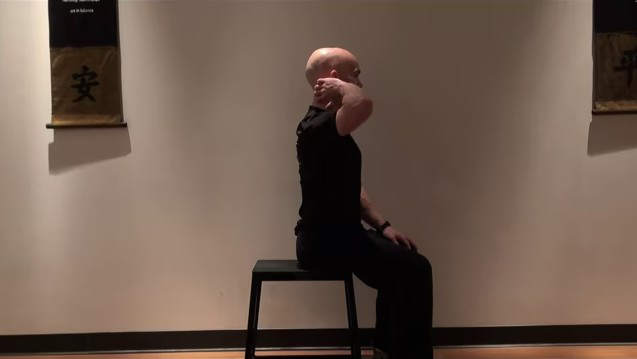Ever feel like your head is just… too heavy? Like your neck’s holding up a bowling ball that’s been training for a powerlifting meet? You’re not alone. Whether it’s from hours at the desk, post-workout tension, or just life wearing you down, neck pain and tension headaches are some of the most common complaints we hear at TruStrength Performance and Rehab.
But here’s the thing—relief might be closer than you think. And it starts with something simple, overlooked, and seriously underrated: the suboccipital stretch.
What Even Are the Suboccipitals?
Good question. Think of the suboccipital muscles as the tiny but mighty stabilizers at the base of your skull. You’ve got four on each side, connecting your skull to your top two vertebrae (C1 and C2). These muscles control subtle head movements—like nodding “yes” or rotating “no”—but they also stabilize your entire head.
When these muscles tighten up from poor posture, repetitive movements, or stress, they can create a ton of issues. We’re talking neck stiffness, tension headaches, limited range of motion, and even dizziness in some cases.
Why Suboccipital Tightness Messes You Up
Here’s what most people don’t realize: suboccipital tightness often triggers referred pain. That means the problem is at the base of your skull, but the pain shows up in your forehead, temples, or behind your eyes.
A few reasons why these tiny muscles get mad:
- Sitting with your head forward for long periods (a.k.a. “tech neck”).
- Heavy lifting without proper neck alignment.
- High stress—because yes, tension likes to live in your neck.
- Lack of stretching or mobility work.
When the suboccipitals are tight, they can also compress the greater occipital nerve, which can lead to headaches and visual disturbances. Not fun.
Common Causes of Suboccipital Dysfunction
Let’s break this down.
1. Poor Posture – If your chin’s jutting forward or you’re glued to screens all day, your suboccipitals are working overtime. Over time, this leads to chronic tightness and discomfort.
2. Stress & Muscle Tension – Stress makes us hunch our shoulders and clench up—hello, suboccipital strain.
3. Previous Neck Injuries – Whiplash, sports injuries, or even just sleeping wrong can irritate the area.
4. Medical Conditions – Conditions like cervicogenic headaches or temporomandibular joint dysfunction (TMJ) are often linked with suboccipital tightness.
5. Repetitive Movements & Lifting – Gym rats, listen up: lifting without stabilizing your cervical spine can wear these muscles down.
6. Structural Imbalances – Things like scoliosis or leg length discrepancies can lead to chronic neck compensation patterns.
How to Tell If Your Suboccipitals Need Help
You don’t need a PhD in anatomy to recognize something’s off. Here are some signs your suboccipitals might be the culprits:
- Frequent tension headaches that start at the base of your skull.
- Stiffness when you try to turn your head.
- Pain behind your eyes or around your temples.
- A weird, dizzy sensation when you move your neck too fast.
- Feeling like your neck is always “tight” but stretching doesn’t seem to help.
Red Flags to Watch Out For
If you’re feeling numbness, tingling in the arms, or weakness, it’s time to get evaluated professionally. Same goes if you’ve had a head injury or serious neck trauma. Don’t guess—get assessed.
Suboccipital Stretch: The Move You Shouldn’t Skip
Here’s where it gets good. The suboccipital stretch is a simple, effective way to relieve tension and improve mobility. When done right, it can help:
- Reduce headache frequency and intensity.
- Improve posture.
- Release built-up tension from stress or overuse.
- Support better spinal alignment.
Here’s a basic version of the stretch:
How to Do It:
- Lie on your back with your knees bent.
- Place a rolled-up towel or a small ball (like a lacrosse ball) at the base of your skull—right under the occiput.
- Let your head gently rest on the support.
- Relax completely, letting gravity do the work.
- Hold for 1–2 minutes, focusing on breathing.
This passive release targets the suboccipitals and lets them finally chill out.
Important: This shouldn’t cause pain. If it does, get evaluated before continuing.
Treatment Options: Beyond the Stretch
At TruStrength Performance and Rehab, we take a full-body approach to neck pain. We don’t just hand you a stretch and send you on your way. Here’s what we might include in a treatment plan:
1. Manual Therapy
Targeted hands-on work to release tension in the suboccipitals and surrounding musculature. Think deep tissue massage, trigger point therapy, and myofascial release.
2. Dry Needling
A great option for stubborn trigger points that don’t respond to stretching. Especially effective around the base of the skull.
3. Neuro-Reset Techniques
We use specific strategies to retrain your brain-body connection and reduce overactivity in those tight muscles.
4. Customized Exercise Plans
Mobility work, postural training, and cervical stabilization exercises help lock in progress.
5. Postural Analysis and Ergonomics
We’ll assess your habits, desk setup, and movement patterns to address the root cause.
Can You Prevent Suboccipital Tightness? Absolutely.
It’s not all doom and gloom. With some consistent habits, you can stay ahead of suboccipital pain.
- Stay mobile: Incorporate regular neck mobility drills.
- Fix your desk setup: Keep screens at eye level and use a chair that supports your spine.
- Strengthen your upper back and deep neck flexors.
- Take breaks from tech—your head wasn’t meant to hang forward for 8 hours.
- Practice stress management: Yoga, meditation, or even just better sleep helps reduce muscle tension.
Don’t DIY Your Neck Forever
While a suboccipital stretch is a great starting point, it’s not always the full answer. Chronic tightness, recurring headaches, or worsening symptoms mean something deeper’s going on. That’s where TruStrength Performance and Rehab comes in.
We combine hands-on care with modern rehab techniques to get you out of pain and keep you there. No fluff. Just results that stick.
Ready to Feel Like Yourself Again?
Book your consultation at TruStrength Performance and Rehab today. Whether it’s neck pain, tension headaches, or mystery stiffness that won’t quit—we’re here to help you move better and feel stronger. Let’s rebuild your neck from the base up.



